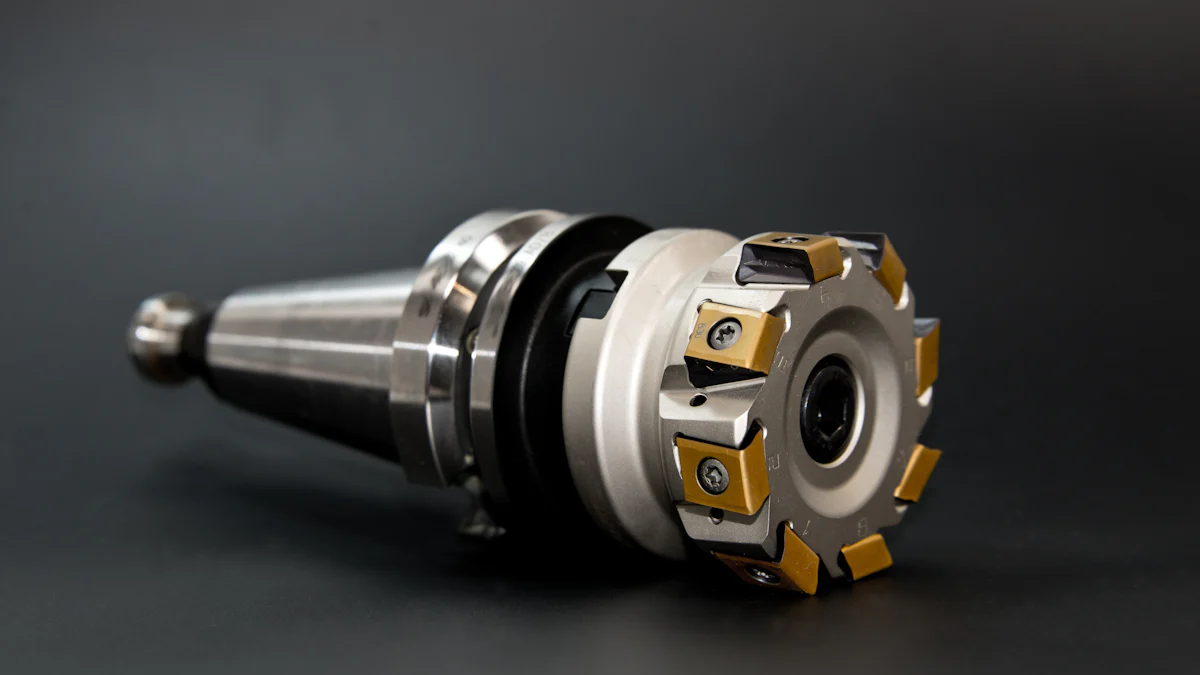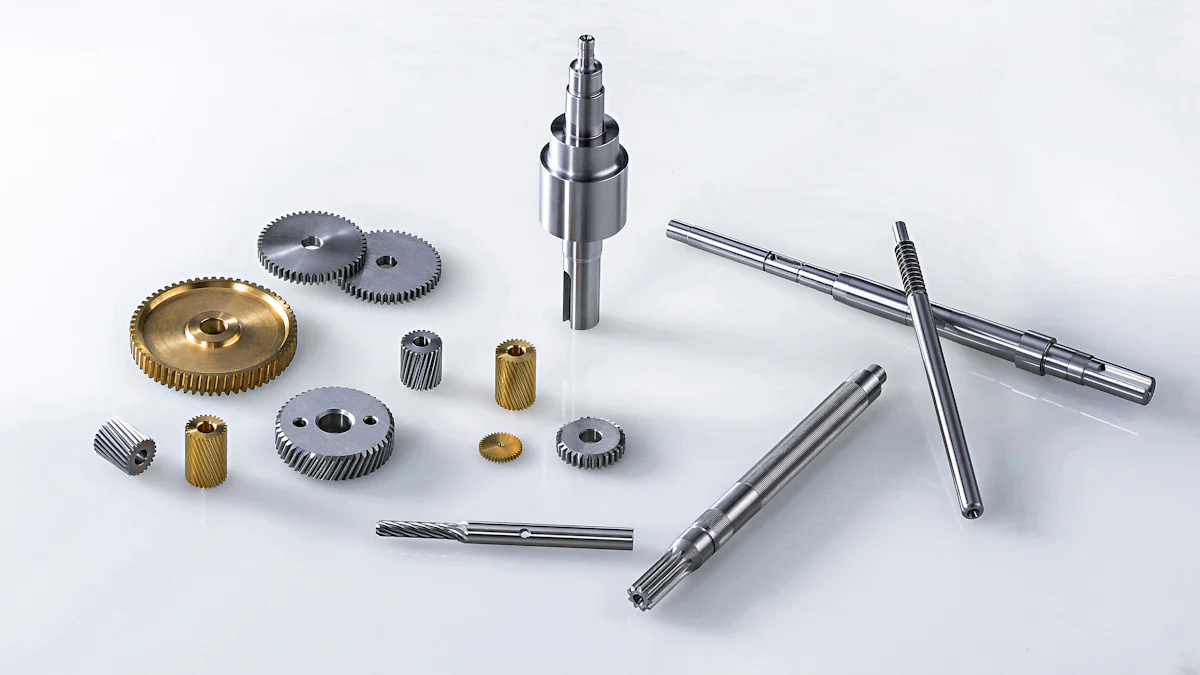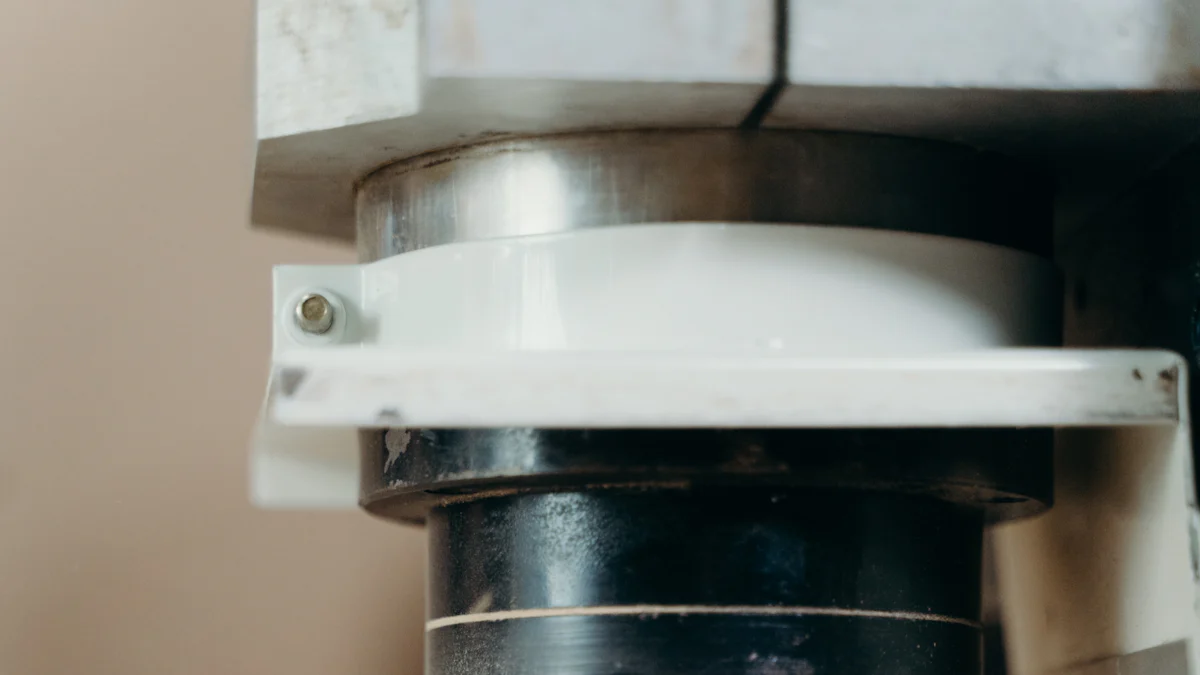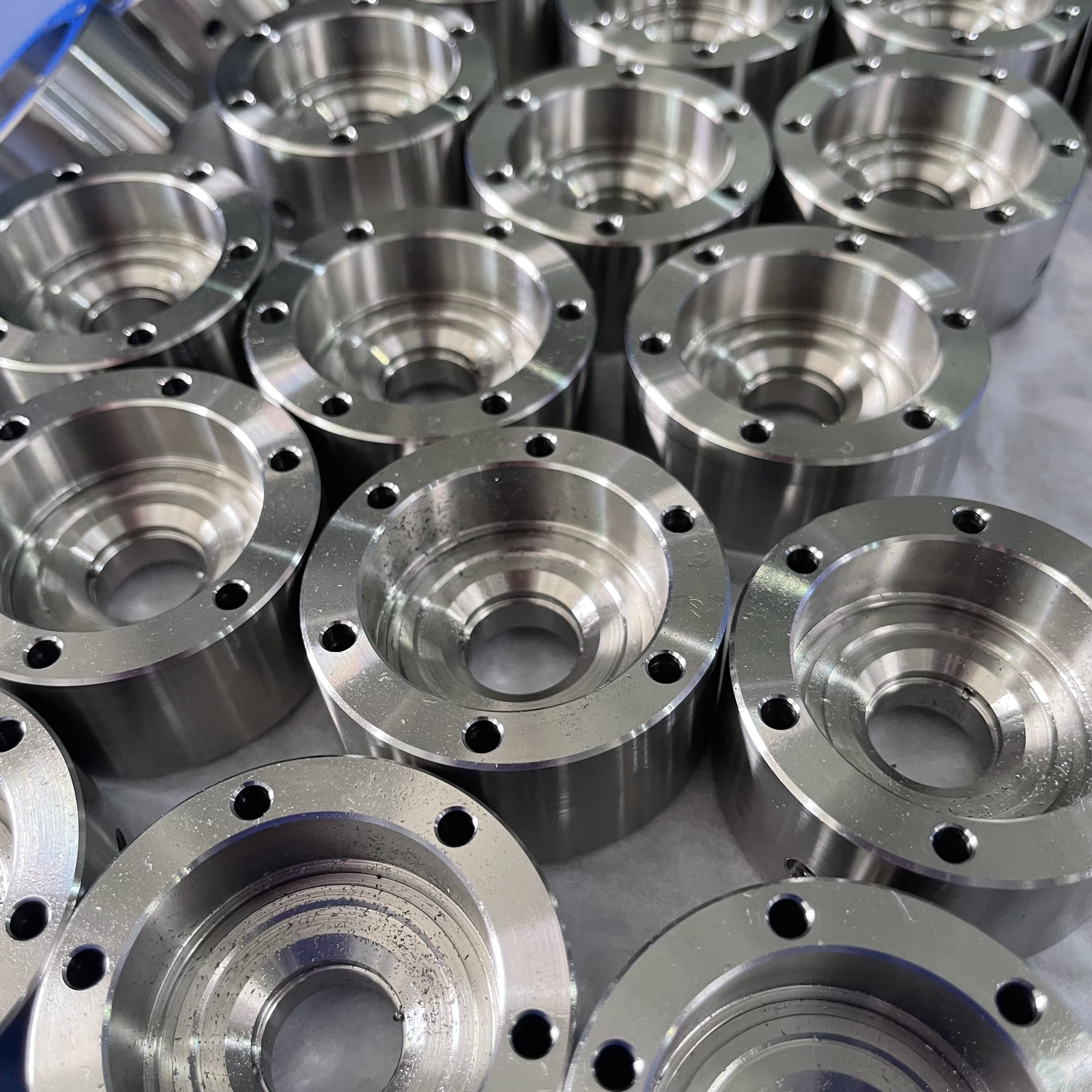Why CNC Machining Is Key for Aluminum Prototyping

CNC machining plays a vital role in aluminum prototyping, offering unmatched precision and adaptability. You can rely on this technology to create functional prototypes with high accuracy. Aluminum’s unique properties make it ideal for CNC rapid prototyping. Its lightweight nature, excellent machinability, and high tensile strength ensure efficient processing and durability. Modern advancements, such as AI-powered machines and multi-axis machining, further enhance the process. These innovations allow you to achieve intricate designs while reducing waste. By combining CNC with sustainable practices, industries can produce high-quality prototypes with minimal environmental impact.
Key Takeaways
CNC machining is very precise. It helps make aluminum prototypes with exact measurements and detailed designs.
Aluminum is light but strong. This makes it great for quick prototyping in fields like airplanes and cars.
CNC machining saves time. It allows fast design changes and quicker testing of prototypes.
This process uses less material, making it a better choice for the environment while creating good-quality prototypes.
Industries like electronics and cars use CNC machining because it works well for many tasks and can handle big or small projects.
The Role of Aluminum in Prototyping

Why Aluminum Is Ideal for Prototyping
Aluminum stands out as a top choice for prototyping due to its unique properties. You’ll find it widely used in industries like automotive, aerospace, electronics, and medical devices. Its lightweight nature and durability make it perfect for creating functional prototypes that can withstand real-world conditions. Aluminum prototyping also benefits from the material's excellent machinability, which allows for precise and efficient production. Whether you’re designing industrial control enclosures, heat sinks, or consumer electronics like laptops, aluminum offers unmatched versatility.
Lightweight and Durable Properties
Aluminum’s lightweight and durable properties provide significant advantages in rapid prototyping. With a density of just 2.7 g/cm³, it’s ideal for applications where weight reduction is critical, such as aerospace and automotive. Its durability ensures that prototypes can endure rigorous testing without compromising performance. The table below highlights some key benefits:
Advantage | Description |
|---|---|
Lightweight | Crucial for weight-sensitive applications like aerospace and automotive. |
Machinability | Enables rapid prototyping and reduces production time and costs. |
Environmental Benefits | Minimizes energy consumption and resource usage, reducing the environmental footprint. |
By using aluminum, you can create prototypes that are both functional and environmentally friendly.
Aluminum's Machinability and Versatility
Aluminum’s machinability sets it apart from other materials. For example, 6061-T6 aluminum offers excellent machinability, allowing you to achieve tight tolerances and smooth finishes. Its softer composition enables faster cutting speeds and reduces tool wear, making it more cost-effective than harder materials like titanium. Unlike titanium, which requires specialized equipment and higher machining costs, aluminum is easier to work with and budget-friendly.
Additionally, aluminum’s versatility makes it suitable for various prototyping methods. You can use CNC machining for high precision, 3D printing for design flexibility, or die casting for complex shapes. Aluminum alloys are also highly workable, allowing you to cut them to size or mold them for thermoplastics or resins. This adaptability ensures that aluminum meets the needs of diverse industries and applications.
Advantages of CNC Machining for Aluminum Prototyping
Precision and Accuracy in CNC Rapid Prototyping
CNC machining delivers unmatched precision, making it essential for creating high-quality aluminum prototypes. Advanced technology and skilled operators ensure tight tolerances, often up to ±0.001 inches. This level of dimensional accuracy is crucial for prototype parts that require exact specifications. You can rely on CNC machines to produce precision prototypes with complex geometries that other methods struggle to achieve.
The computerized control over cutting tools ensures consistent results across multiple prototypes. Whether you need a single prototype or a batch of identical parts, CNC machining maintains structural integrity and uniformity. This repeatability is vital for industries like aerospace and automotive, where even minor deviations can compromise product development.
Speed and Efficiency for Rapid Prototyping
CNC machining excels in rapid prototyping by significantly reducing production time. Unlike manual machining or mock-ups, CNC machines operate at high speeds, allowing you to meet tight deadlines. They also outperform methods like 3D printing or casting in terms of turnaround time. Faster production means you can test designs and gather feedback more quickly, accelerating your product development cycle.
Additionally, CNC machining saves time by enabling quick design changes. You can switch between materials or modify designs without lengthy delays. This adaptability ensures that your prototypes are ready for testing or market evaluation in record time.
Material Compatibility and Waste Reduction
CNC machining supports a wide range of materials, including aluminum, making it a versatile choice for prototyping. Its subtractive process removes material from a solid block, but its precision minimizes waste. By reducing defective parts, CNC machining ensures efficient material use and lowers costs.
You can also benefit from its ability to produce prototypes without molds, which further reduces waste during production. This efficiency not only saves resources but also enhances environmental sustainability. CNC machining’s focus on waste reduction contributes to a smaller carbon footprint, helping you align with eco-friendly practices.
Repeatability for Consistent Results
CNC machining ensures consistent results, making it a reliable choice for aluminum prototyping. You can depend on its repeatability to produce identical parts, even in large batches. This consistency is essential for industries like aerospace and automotive, where precision and uniformity are critical.
Several factors contribute to the repeatability of CNC machining for aluminum prototypes:
Excellent machinability allows materials like 6061-T6 aluminum to hold tight tolerances and achieve smooth finishes.
A favorable strength-to-weight ratio enhances durability while keeping prototypes lightweight and easy to handle.
Corrosion resistance ensures prototypes withstand environmental testing without degradation.
Cost-effectiveness makes 6061 aluminum an affordable option for producing multiple iterations.
Availability and familiarity with aluminum simplify the machining process, as most CNC machinists are well-versed in its properties.
Design flexibility supports the creation of intricate geometries, enabling iterative development with ease.
CNC machining’s computerized controls further enhance repeatability. Machines follow programmed instructions with high accuracy, eliminating human error. This automation ensures that every prototype matches the original design, regardless of complexity. You can trust CNC to deliver consistent results, whether you need a single prototype or a full production run.
The benefits of repeatability extend beyond quality. It reduces waste by minimizing defective parts, saving both time and resources. This efficiency makes CNC machining a cost-effective solution for prototyping, especially when precision and uniformity are non-negotiable.
CNC Machining vs. Other Prototyping Methods
CNC Machining vs. 3D Printing for Aluminum Prototyping
When comparing CNC machining and 3D printing for aluminum prototyping, you’ll notice significant differences in precision and material compatibility. CNC machining achieves a precision of ±0.01 mm, far exceeding the ±0.1 mm tolerance of advanced 3D printing technologies like DMLS. This makes CNC machining the better choice for creating precision prototypes with tight tolerances.
CNC machining also supports a wide range of materials, including aluminum, stainless steel, brass, and titanium. In contrast, 3D printing is limited to plastics and composites. The table below highlights these differences:
Method | Precision | Material Compatibility |
|---|---|---|
CNC Machining | High (±0.01 mm) | Wide range including Aluminum, Brass, Titanium |
3D Printing | Moderate (±0.1 mm) | Limited to plastics and composites |
However, 3D printing can be more cost-effective for small production runs or prototypes with simple designs. It avoids the setup costs associated with CNC machining, making it ideal for early-stage product development.
CNC Machining vs. Casting for Rapid Prototyping
CNC machining offers several advantages over casting for rapid prototyping. Once programmed, CNC machines operate continuously, producing parts faster than traditional casting methods. You can convert CAD files into cutting instructions within hours, with cutting times measured in minutes. This speed allows you to iterate designs quickly and meet tight deadlines.
CNC machining also scales efficiently. Whether you need one prototype or hundreds, CNC machines maintain consistent quality and structural integrity across all parts. Casting, on the other hand, may struggle with scalability due to mold preparation and material limitations.
While casting generates less material waste, CNC machining provides greater flexibility. You can easily adjust designs or switch materials without significant downtime. This adaptability makes CNC machining a superior choice for rapid prototyping.
Cost-Effectiveness and Scalability of CNC Machining
CNC machining becomes more cost-effective as production volume increases. For large-scale production, the cost per unit decreases, making it competitive with other methods. Automation ensures consistent quality, reducing the risk of defective parts and saving resources.
You’ll also benefit from CNC machining’s scalability. Once a design is validated, it can be replicated across thousands of parts without compromising accuracy. This reliability makes CNC machining ideal for industries requiring high-volume production with tight tolerances.
Although CNC machining incurs higher initial costs due to tooling and setup, its long-term benefits outweigh these expenses. Partnering with experienced CNC service providers can further enhance efficiency, ensuring your prototypes meet industry standards.
Real-World Applications of CNC Machining in Aluminum Prototyping

Aerospace Prototypes and Components
CNC machining plays a critical role in aerospace prototyping, where precision and reliability are non-negotiable. You can use CNC rapid prototyping processes to create intricate components like airfoils, manifolds, and bushings. Other essential parts include bulkheads, wing skins, and engine mounts. These components demand high accuracy and structural integrity to meet the rigorous standards of the aerospace industry.
The benefits of CNC machining for aerospace applications are significant. It minimizes waste, which is crucial when working with high-cost materials like aluminum. The process also ensures dimensional accuracy, enabling the production of complex geometries such as landing gear ports and fuel flow components. Additionally, CNC machining delivers superior surface quality, often eliminating the need for secondary finishing.
Benefit | Description |
|---|---|
Minimized Waste | Reduces material wastage, crucial for high-cost materials like aluminum. |
Precision for Complex Geometries | Highly effective in producing intricate shapes and complex features, ideal for aerospace components. |
Superior Surface Quality | Delivers excellent surface finishes, often eliminating the need for secondary finishing processes. |
Automotive Parts and Prototyping
The automotive industry relies heavily on CNC machining for prototyping. You can quickly iterate and refine designs, which is essential in this competitive market. CNC machining ensures high precision, allowing prototypes to reflect exact specifications. This accuracy supports real-world testing before mass production.
Examples of automotive prototypes include suspension components, cylinder heads, and exhaust system parts. CNC machining also produces interior panels, crankshafts, and gearboxes with exceptional structural integrity. These functional prototypes help verify designs and improve product development. By using CNC machining services, you can achieve rapid prototyping while maintaining high accuracy and cost efficiency.
Consumer Electronics and Functional Prototypes
CNC machining has revolutionized aluminum prototyping in consumer electronics. You can rapidly produce both functional prototypes and aesthetic designs, especially for aluminum enclosures. These enclosures offer durability, enhanced performance, and a sleek appearance, making them ideal for competitive markets.
The CNC prototyping process overcomes challenges like processing difficulties and high costs. This makes aluminum a preferred material for products such as industrial control enclosures and heat sinks. By leveraging CNC machining for prototyping, you can create high-quality prototypes that meet both functional and aesthetic requirements.
CNC machining remains indispensable for aluminum prototyping due to its unmatched precision, speed, and adaptability. You can rely on it to produce precision prototypes that meet exact specifications, ensuring success in product development. Its ability to handle rapid prototyping with minimal waste and no fixed tooling makes it a cost-effective solution. Industries like aerospace, automotive, and electronics benefit from its versatility and scalability. By integrating CNC machining into your prototyping process, you can achieve high-quality results while accelerating timelines and reducing costs.
FAQ
What makes CNC machining better than other prototyping methods?
CNC machining offers unmatched precision, speed, and material compatibility. You can achieve tight tolerances, consistent results, and faster production compared to methods like 3D printing or casting. Its ability to handle complex designs and a wide range of materials makes it a superior choice.
Can CNC machining handle intricate aluminum designs?
Yes, CNC machining excels at creating intricate designs. Multi-axis machines allow you to produce complex geometries with high accuracy. This capability ensures that even the most detailed aluminum prototypes meet your exact specifications.
How does CNC machining reduce material waste?
CNC machining uses subtractive manufacturing, but its precision minimizes waste. You can optimize material usage by programming machines to cut only what’s necessary. This efficiency reduces defective parts and aligns with eco-friendly practices.
Is CNC machining cost-effective for small production runs?
CNC machining can be cost-effective for small runs, especially when precision is critical. While setup costs may be higher, the accuracy and repeatability of CNC machining often outweigh these expenses. You can also save time by avoiding mold preparation.
What industries benefit most from CNC aluminum prototyping?
Industries like aerospace, automotive, and electronics benefit greatly. You can use CNC machining to create lightweight, durable, and precise prototypes. Its versatility supports applications ranging from engine components to consumer electronics enclosures.
💡 Tip: Partnering with experienced CNC service providers ensures you get the best results for your aluminum prototypes.
See Also
Uncovering Benefits of Aluminum CNC Machining Solutions
Investigating CNC Machining Options for Accurate Production
Streamlined CNC Machining Solutions for Precision Production
Addressing Issues: Improving CNC Prototyping Precision and Speed
Perfecting CNC Machining Techniques for Accurate Parts Production
About US
Follow Us
Your prototype holds unparalleled significance, and we deeply value its uniqueness. Collaborating with you during the preparation phase for running your prototype or parts is a commitment we gladly embrace. Whether it's a single part or a complex assembly, we are dedicated to selecting the optimal tools and pathways to bring your envisioned product to life.
At Precision Fab CNC Machining, we specialize in producing parts for prototypes, short runs, and high-volume production. Our prototyping machine capabilities extend across metal, plastic, and wood machining, with welding fabrication services available to complement and finalize your prototype if required.
Address
Address: Room320 10F, Building A,Nanshan international building, Dayawan District, Huizhou, Guangdong, 516001 China
Contacts
billy@timaycnc.com

